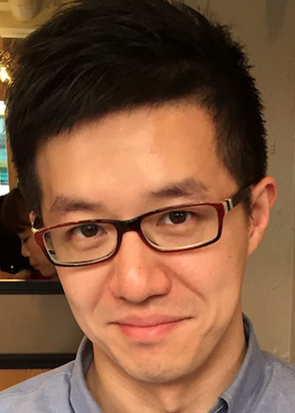KaKing Yan Associate Professor, PI
|  |
| Biography |
| 2002.8-2006.5, State University of New York at Binghamton, Chemistry Major, B.S. 2006.8-2013.5, Iowa State University, Inorganic Chemistry Major, Ph.D. 2013.8-2015.6, University of California, Berkeley, Department of Chemistry, Postdoc 2015.8-2018.8, The University of Tokyo, Department of Applied Chemistry, Postdoc 2018.9-present, ShanghaiTech University, School of Physical Science and Technology, Assistant Professor, PI |
| Research Interests |
| My research program will focus on a) understanding the fundamental aspect in host-guestchemistry and developing “Next generation supramolecular molecules and MOF material” for novel applications towards structural determination from small (ex. pharmaceutically important molecules to natural products) to macromolecules (ex. proteins) as well as snapshot of chemical reactions by in-situ X-ray crystallography, and asymmetric catalysis. |
| Selected Publications |
| 1) Yan, K.; Dubey, R.; Arai, T.; Inokuma, Y.; Fujita, M. “Chiral Crystalline Sponges for the Absolute Structure Determination of Chiral Guests.” J. Am. Chem. Soc. 2017, 139, 11341–11344. 2) Pindwal, A.; Yan, K.; Patniak, S.; Schmidt, B. M.; Ellern, A.; Slowing, I. S.; Bae, C.; Sadow, A. D. “Homoleptic Trivalent Tris(Alkyl) Rare Earth Compounds.” J. Am. Chem. Soc.2017, 139, 16862-16874. 3) Yan, K.; Duchimaza Heredia, J. J.; Ellern, A.; Gordon, M. S.; Sadow, A. D. “Lewis Base Mediated β-Elimination and Lewis Acid Mediated Insertion Reactions of Disilazido Zirconium Compounds.” J. Am. Chem. Soc.2013, 135, 15225–15237. 4) Yan, K.; Ellern, A.; Sadow, A. D. “Nonclassical β-Hydrogen Elimination of Hydrosilazido Zirconium Compounds via Direct Hydrogen Transfer.” J. Am. Chem. Soc.2012, 134, 9154–9156. 5) Yan, K.; Upton, B. M.; Ellern, A.; Sadow, A. D. “Lewis Acid-Mediated -Hydride Abstraction Reactions of Divalent M(C(SiHMe2)3)2THF2 (M = Ca, Yb).” J. Am. Chem. Soc.2009, 131, 15110–15111. |


